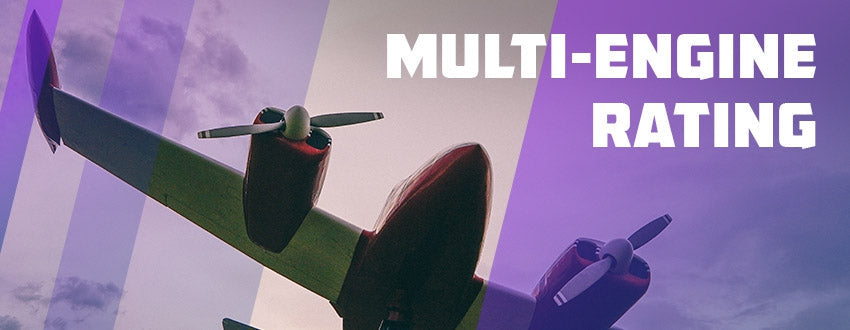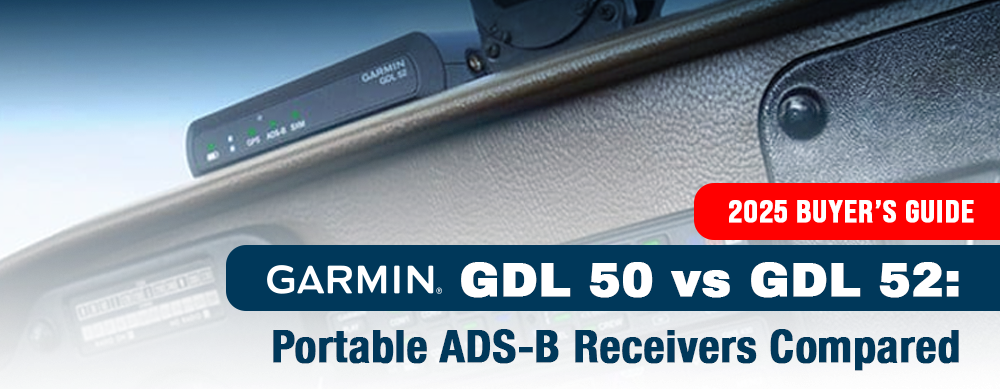Perhaps you, like many other pilots, have been on the fence about whether you should get a multi-engine rating. You may be wondering what the advantages are and if it is worth it. Maybe you don’t know how long it takes to earn a multi-engine rating and are unfamiliar with the process.
Simply put, a multi-engine rating is an add-on rating that can be earned by someone who already possesses a pilot certificate. This rating allows you to pilot an aircraft with more than one engine. There are several reasons why getting a multi-engine rating is important including:

1. It gives you the ability to fly larger, roomier aircraft
A small, single engine aircraft is perfect for you to take solo day trips in, but what happens when you want to expand to weekend adventures with a group of friends or your family?
You may quickly discover that there simply aren’t enough seats or payload capacity for you, your buddies and everyone’s golf clubs or tents.
With the step up to multi-engine comes a corresponding increase in aircraft size and payload capacity. You will find that you can fit more people and haggle less over how many bags they each can bring if you make the jump to multi-engine.
2. You will be able to get to your destination faster
Although many associate a multi-engine rating with commercial pilots, you don’t have to be a commercial pilot to appreciate the increased cruising speed of a multi-engine aircraft.
Many busy private pilots look forward to using their aircraft as the ticket to escape the city for a relaxing weekend retreat. In this case, the sooner you get there the better, and a multi-engine plane can shave time off your journey. That means more hours on the golf course or the boat and less time spent getting there.
3. You can fly at higher altitudes and for longer distances
Multi-engine aircraft tend to have higher cruising altitudes and to be capable of greater range than a single engine. This opens your options up and allows you to plan longer legs for cross country flights. It also means you can take advantage of the decreased fuel consumption that accompanies high altitude flying.
 4. You will have more aircraft to choose from
4. You will have more aircraft to choose from
Whether you are renting a plane or looking to purchase one, adding a multi-engine rating to your repertoire gives you access to a whole new range of aircraft that you would otherwise not be able to choose from.
More choices mean that you can select the plane that is the best fit for you and your needs. You won’t be restricted and have to merely settle for one based on your piloting qualifications.
5. You will be able to fly in areas where single engine aircraft aren’t recommended
A multi-engine aircraft is generally strongly recommended if your flight plan takes you over terrain where an emergency landing would be difficult or impossible.
This means that you will want your multi-engine rating before making that dream flight over the Rocky Mountains or large stretches of the Pacific Ocean.
6. You will be more competitive to airlines and charter companies looking for pilots
If you are keen on working your way up the airline piloting ranks, you already know that the more certifications, ratings, and hours you have, the better.
Since you will need a multi-engine rating to achieve your career goals, you may as well get it now so you are one step closer and can show a prospective employer that you take initiative to learn new skills.

7. You will meet minimum qualifications for many regional airlines
Many regional airlines are seeking pilots that have at least 25-50 hours of multi-engine experience. The sooner you get certified, the sooner you will qualify.
8. The certification process is quick and easy
If you are like most people who are considering a multi engine certification, you are already at the minimum a private pilot. You may also have your instrument rating and maybe even your commercial certification.
You won’t have to take another written FAA test. To get your multi-engine rating, there isn’t even a minimum number of required flight hours.
Simply train with an instructor until you learn the necessary skillsets and emergency recovery maneuvers, then schedule your oral exam and checkride.
On average, it should only take you about ten to fifteen hours of flight time to prepare to earn a rating that will open all sorts of opportunities and expand your flight potential.

|
Gleim Online Multi-Engine Add-on Rating CourseEarning a multi-engine rating requires a thorough understanding of the nuances of multi-engine aerodynamics, performance considerations, aircraft systems, and engine-out operations. To help you acquire the essential knowledge you need to safely operate twins, Gleim has developed an all-inclusive, audiovisual online course to help you master the fundamentals of multi-engine flying. |
Did you find this article helpful?
Do you think we missed anything important? Let us know in the comments below!







